

The project encompasses a dual investigation across urban anthropology and housing typology in Lavapiés, a neigbourhood in Madrid city centre. This architectural thesis explores the use and production of domestic space from those two perspectives.
The neighborhood gathers local population with a high percentage of old people together with immigrant population from very diverse origins. Due to this fact, it is easy to find many types of dwellers that the current housing market forgets. Some examples of these located users (addressed by the project) are people evicted from their homes (foreclosed homes), dependents, new immigrants without resources, and temporary dwellers. The feature they share is their temporary situation.
With regards to the built environment, the neighborhood is undergoing a redevelopment process, guided by the Integral Rehabilitation Plan of the Administration. However, the Plan is not addressing the main problem of the area, which needs urgently a solution; the existence of 16% of substandard dwelling in the interior of the blocks.
As a response to these issues, this project proposes an alternative for redevelopment; a system that regenerates the interiors of the blocks. The project proposes a series of temporary-use domestic equipment, which also can complete the existing housing-hardware in the neighborhood. The infrastructure for these equipment takes and re-adapts urban elements of the studied urban setting, both traditional (balconies, courtyards, terrace roofs) and newly ones (scaffolding, braces). The scaffolding-structure works as a stabilizer of the party walls of the blocks and provides new accesses to the inhabitable dwellings. The adjustable components adapt and integrate the whole system in the irregular urban tissue.
In this fashion, the interior courtyards become dynamic and reversible scenarios, creating a new realm in-between private and public than can be transformed organically. The new technological devices equip the common open spaces, while reducing water and energy consumption of the inhabitants. The whole system fulfills specific needs of the proposed domestic life by fostering processes of participation, negotiation, exchange, caring and sustainability. The ultimate aim is to provide a collective link within the community of dwellers.



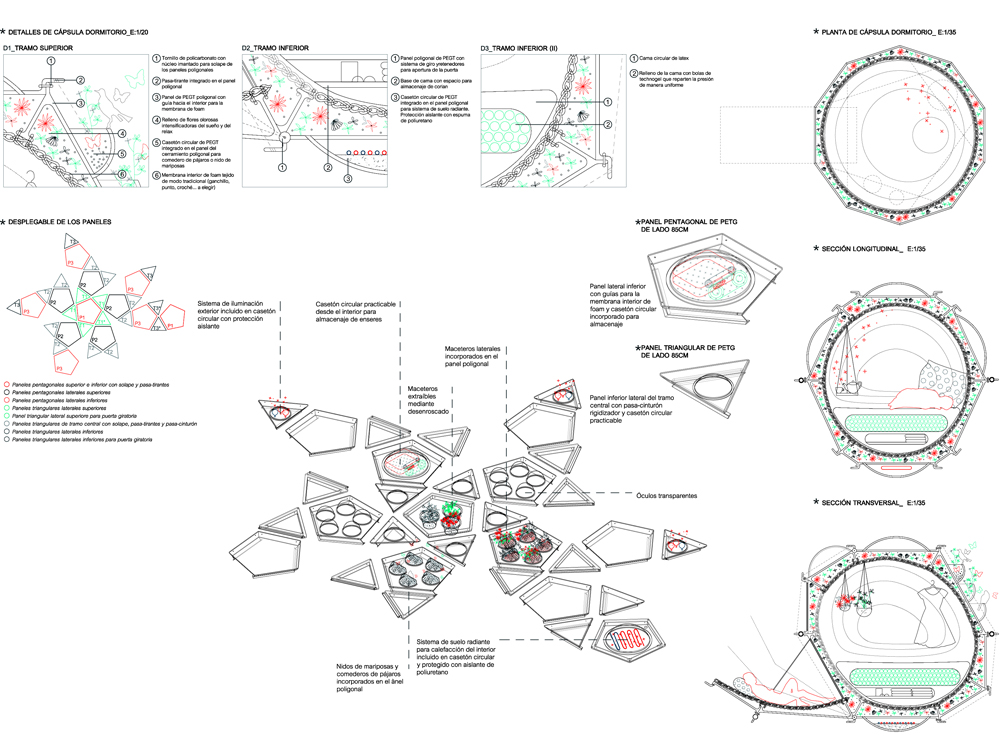


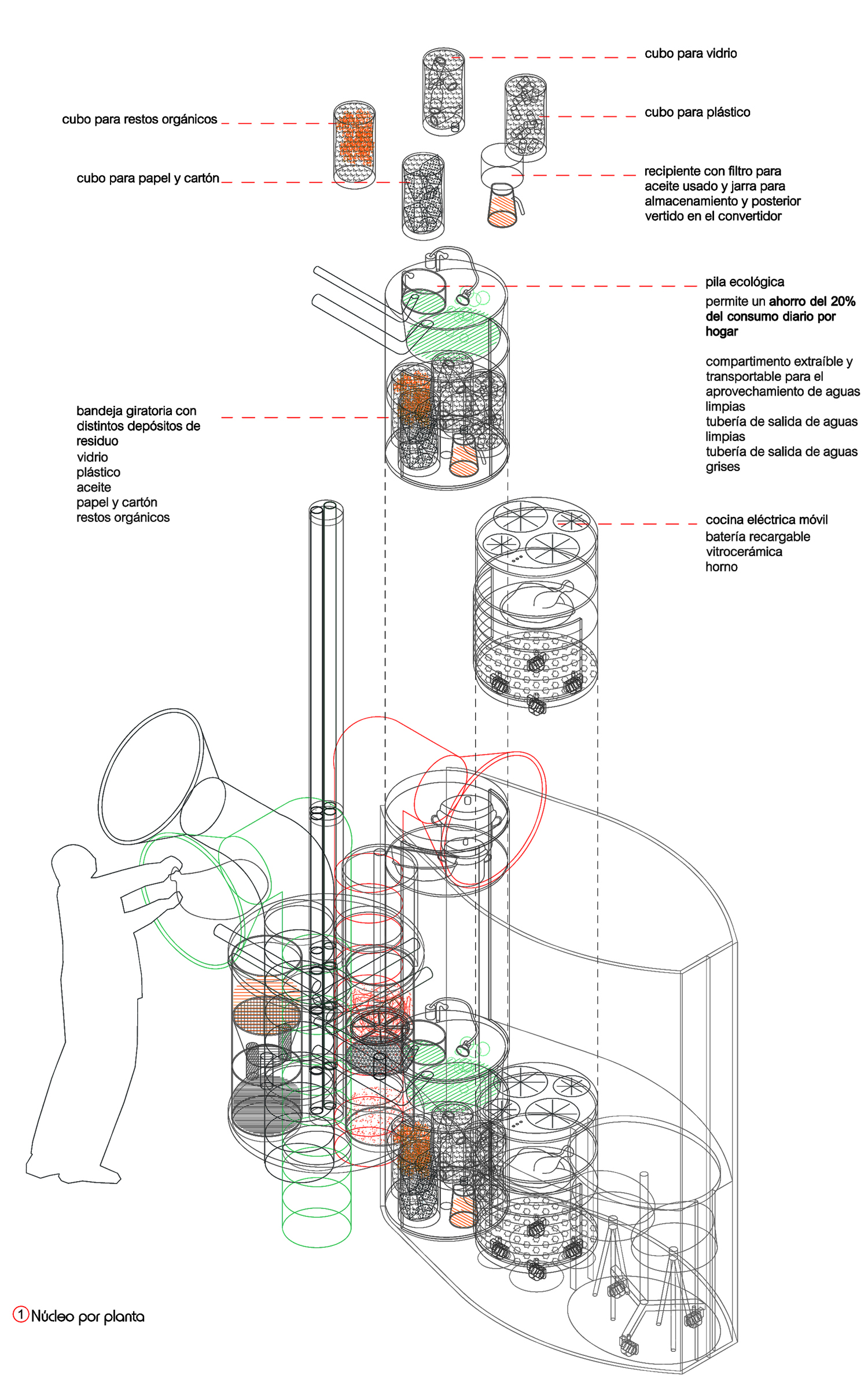

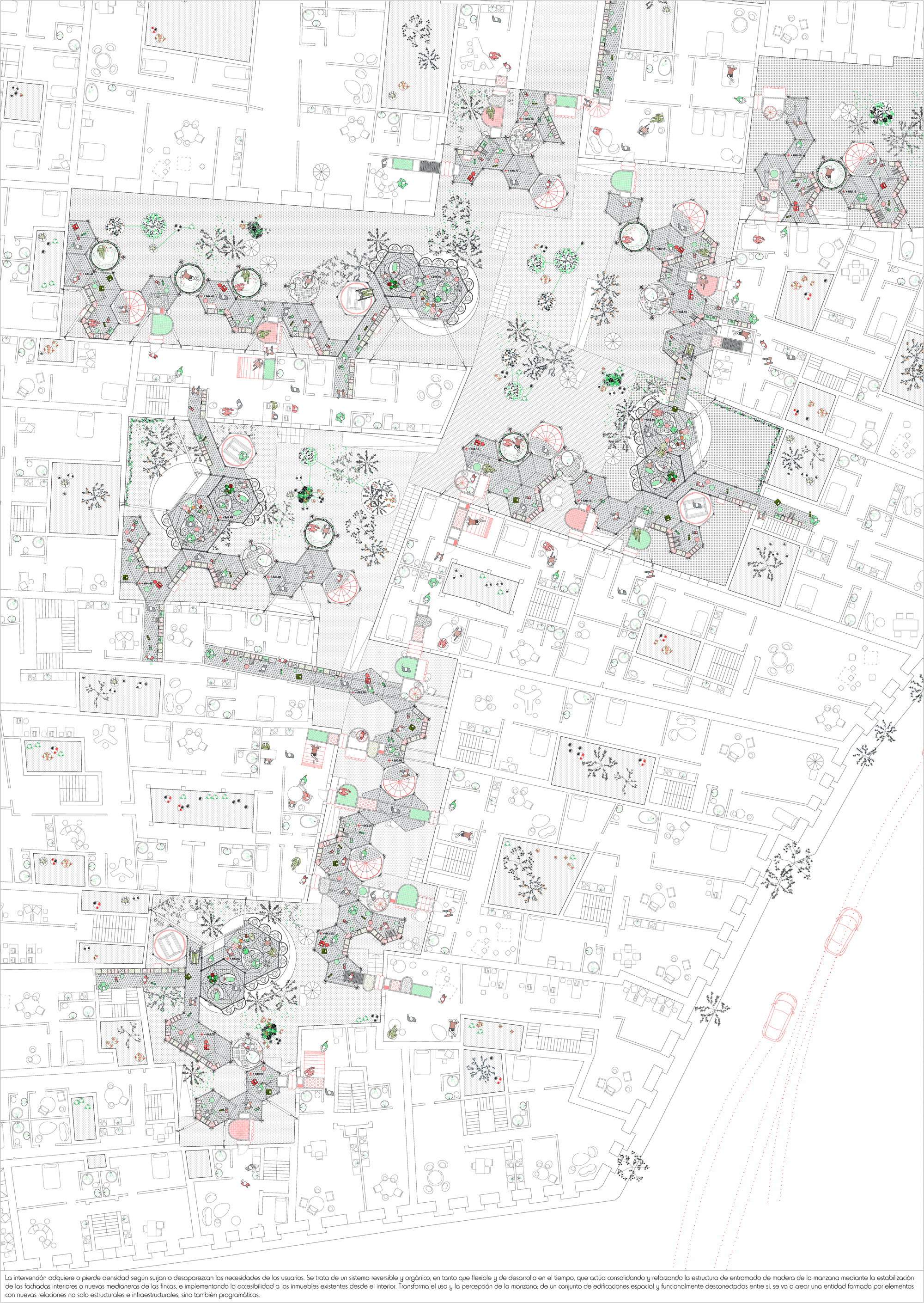
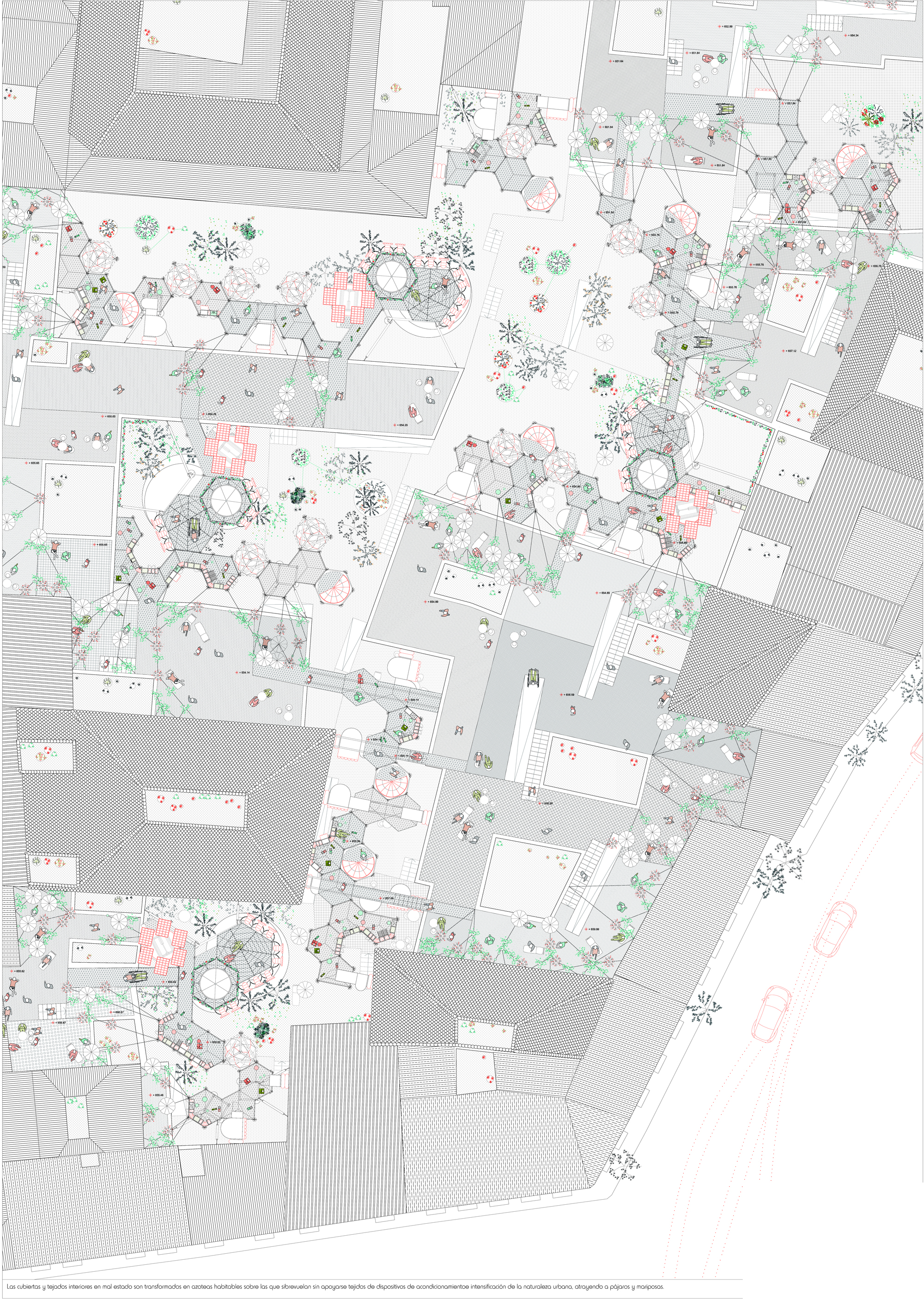
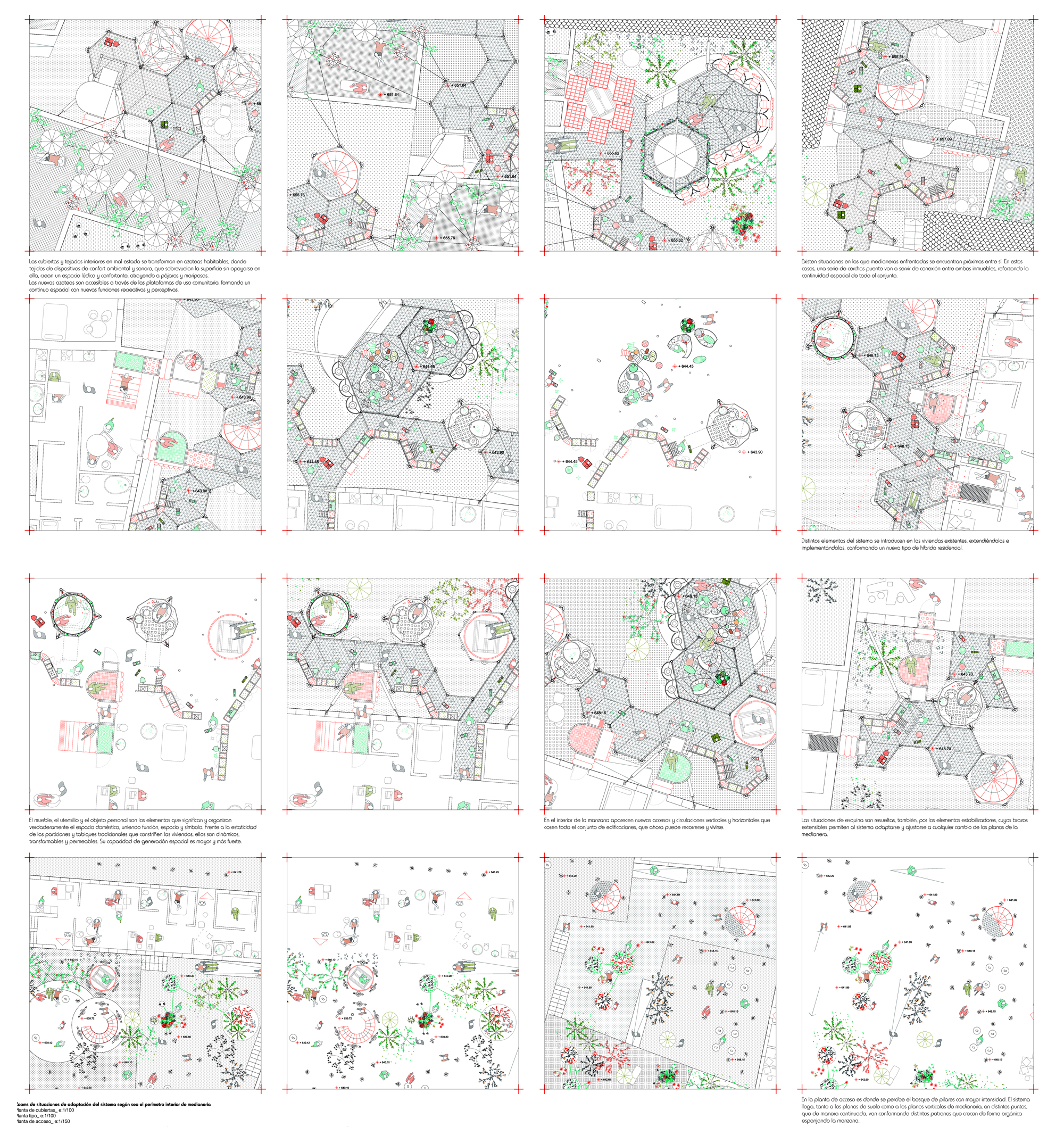

ETSAM